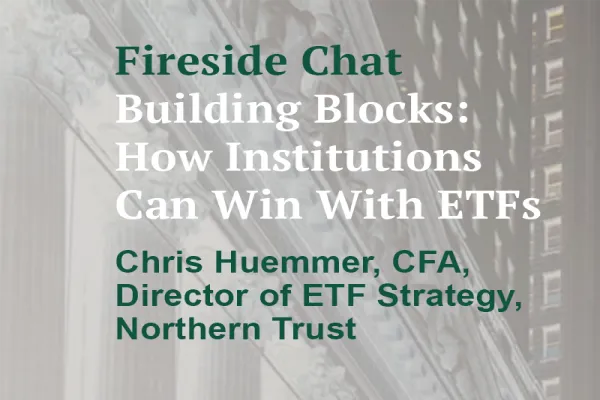On December 3 New York–based KraneShares became the third exchange-traded fund sponsor in less than a month to launch a U.S.-based ETF offering investors direct access to China’s onshore bond market. The first such ETF was from Van Eck Global, sponsor of the Market Vectors funds; it went live for trading on Veterans Day and was followed a week later by one from Global X Funds. Deutsche Bank has filed a registration statement for a product with the Securities and Exchange Commission.
In November 2013 Deutsche launched the first U.S. ETF giving access to the A-shares portion of the mainland Chinese stock market. The Deutsche X-trackers Harvest CSI 300 China A-Shares ETF (ASHR) has met with great success. Since inception it has grown to $633.9 million in assets with an annualized total return of 16.46 percent as of November 30, according to the bank.
Now the spotlight has shifted to a new group of ETFs focused on mainland China’s $5 trillion bond market. The third largest, behind those of the U.S. and Japan, this marketplace dwarfs the $100 billion market for dim sum bonds, which are denominated in renminbi and issued offshore, primarily in Hong Kong.
“It’s a natural progression for fixed income to follow equity,” says KraneShares managing director Brendan Ahern. “The door is opening with greater levels of access.” Says Jay Jacobs, a research analyst at New York–based Global X, which sponsors 41 ETFs with $4 billion in assets: “First it was A shares, and the bond market has been the second wave.”
All of the forecasts point to considerable growth in China’s domestic bond market in the near future. “We expect that through the end of 2018, the debt needs of China, with its comparatively high nominal GDP growth, will reach $20 trillion — a full one third of the almost $60 trillion in global refinancing and new debt needed,” ratings agency Standard & Poor’s Financial Services said in a recent report.
Although mainland China is on the path to opening its markets to direct foreign investment, to gain access to its bonds these U.S. sponsors have had to follow the example of their A-shares ETF counterparts by teaming up with Hong Kong–based partners that have been granted quotas under China’s renminbi qualified foreign institutional investor (RQFII) program.
The new bond funds are all passively managed and benchmarked to indexes, but they each take their own approach to China’s huge debt market.
The KraneShares E Fund China Commercial Paper ETF (KCNY) is “a little different” from the others because it will concentrate on 120-day commercial paper, which carries a rate of about 3.5 percent net of fees, Ahern says. In China such paper is issued mostly by utilities, and the country’s money market funds are among the buyers, he explains. However, the KraneShares ETF isn’t in the same league as a money market fund because its net asset value will fluctuate. The fund's benchmark is the CSI Diversified High Grade Commercial Paper Unhedged Index.
The reason KraneShares is focusing on the shortest part of the yield curve is that the spread between Chinese and U.S. rates is widest there but carries the least risk if interest rates rise, Ahern says.
KraneShares, a newcomer to the ETF business, was founded in early 2011 by CEO Jonathan Krane, who previously had spent ten years working with Chinese companies and lived in China for some of that time. The firm has launched three other China-specific ETFs since July 2013, including an A-shares fund, a China Internet fund and a “new China” fund geared toward opportunities created by the country’s latest five-year economic development plan. Combined, that trio managed $238 million in assets on December 1, Ahern says.
New York–based Van Eck Global, which sponsors 60 ETFs globally with combined assets under management of $21.8 billion as of October 31, has a family of emerging-markets bond ETFs. The firm’s new Market Vectors ChinaAMC China Bond ETF (CBON) was a “natural extension for us,” says Francis Rodilosso, its senior investment officer for fixed-income ETFs.
CBON, which had $19.8 million in assets as of December 2, is benchmarked to the ChinaBond China High Quality Bond index. The day before the ETF’s November 11 launch, that index had a yield to maturity of 4.1 percent, Van Eck said in its announcement.
The maturities in CBON’s portfolio range from one to ten years, with an average of 3.9 years, Rodilosso says. All of its bonds will be investment-grade by Chinese standards, but under China’s rating system the triple-A category encompasses all investment-grade bonds, not just those with the highest ratings, he cautions.
Likewise, the $49.1 million Global X GF China Bond Fund (CHNB), which follows the S&P China Composite Select Bond index, has maturities of one to seven years and an average weighted maturity of 3.6 years, Global X’s Jacobs says.
“The yield curve on Chinese onshore bonds is essentially very flat once you push out beyond five, ten years,” he notes, adding that he expects it will “get steeper in the near future.” China recently cut its benchmark one-year lending rate by 40 basis points, to 5.6 percent, and its one-year deposit rate by 25 basis points, to 2.75 percent, to stimulate a softening economy.
In China bonds trade on the exchanges and in the interbank market, but the latter has 97 percent of total volume. It’s also where the larger issues trade — those that wouldn’t be accessible to foreign investors without an RQFII partner, Jacobs explains.
That interbank market is actively traded, with more than $80 billion in turnover on a daily basis, says Nathan Lin, CEO of GF International Investment Management of Hong Kong, Global X’s subadviser and RQFII partner.
Lin recalls that when he was in the U.S. in August for the ETF’s prelaunch road show, he was “excited” by the level of interest in the product but “shocked” at how little U.S. investors knew about the onshore China bond market. He says he’s coming back early next year for another road show. Educating U.S. investors is “one of the biggest challenges for us,” Lin admits.






